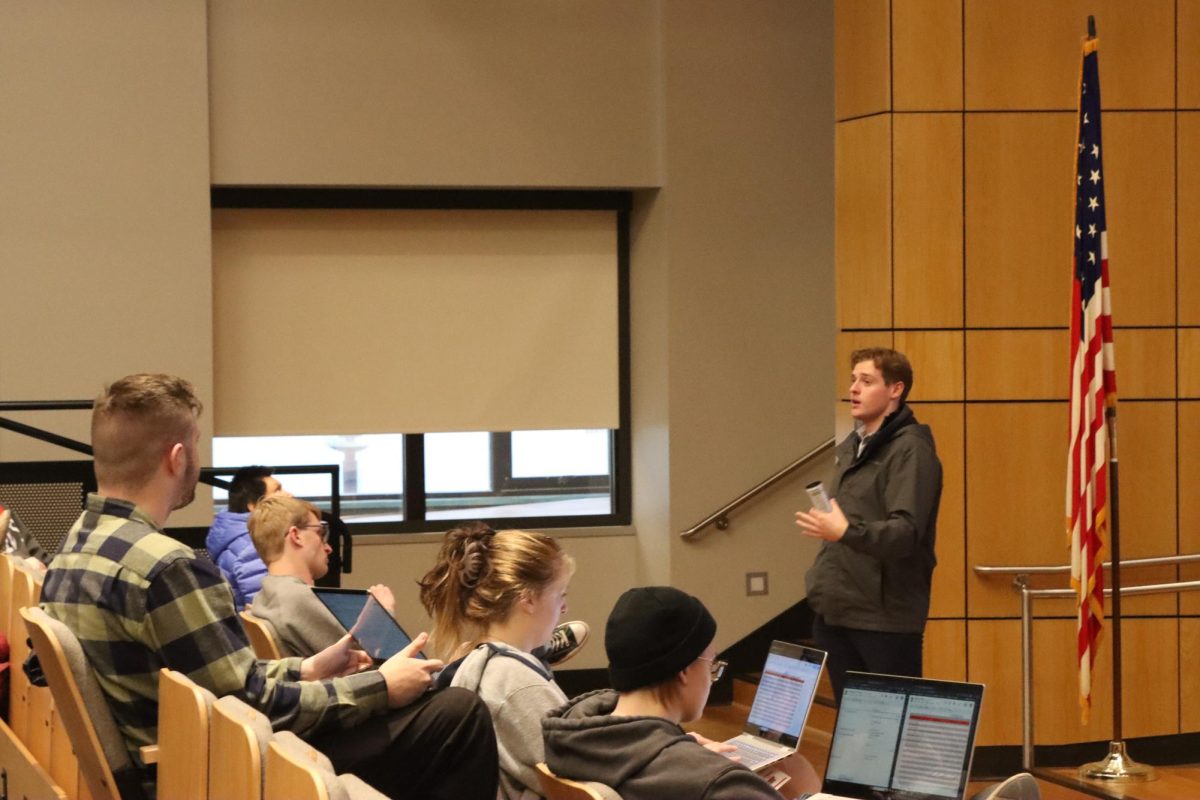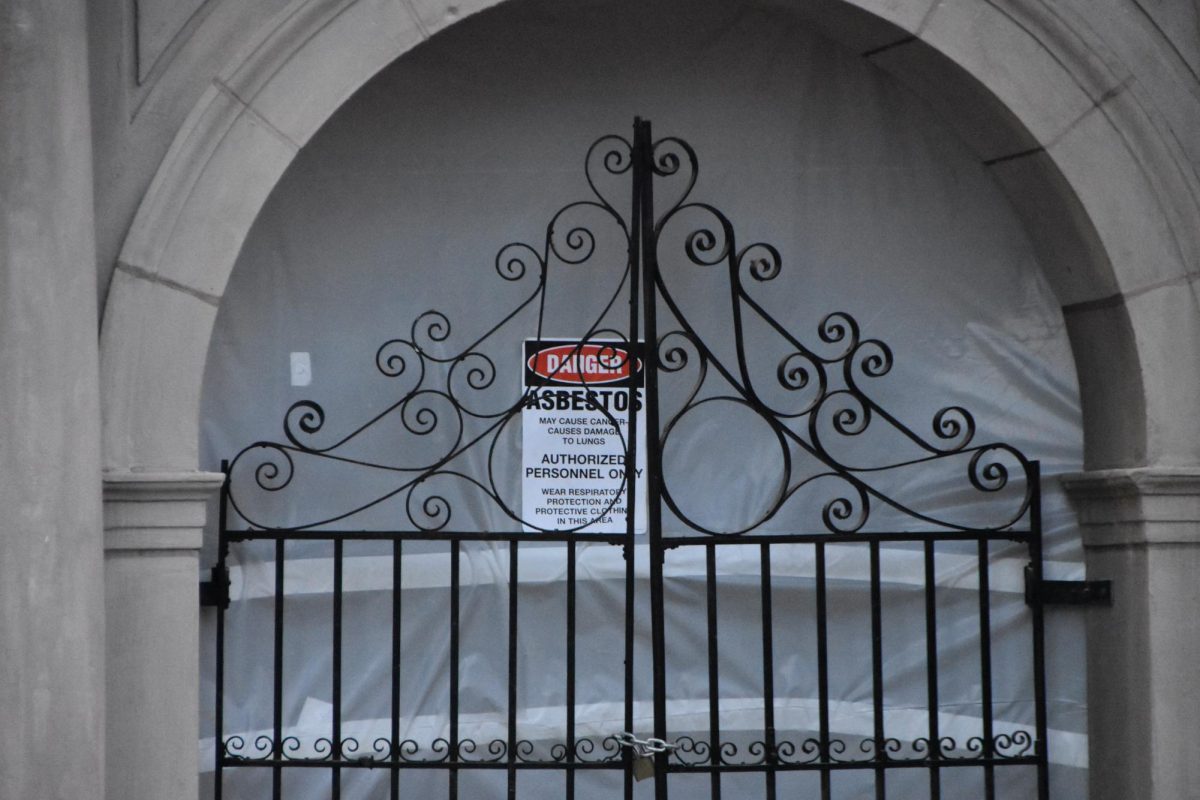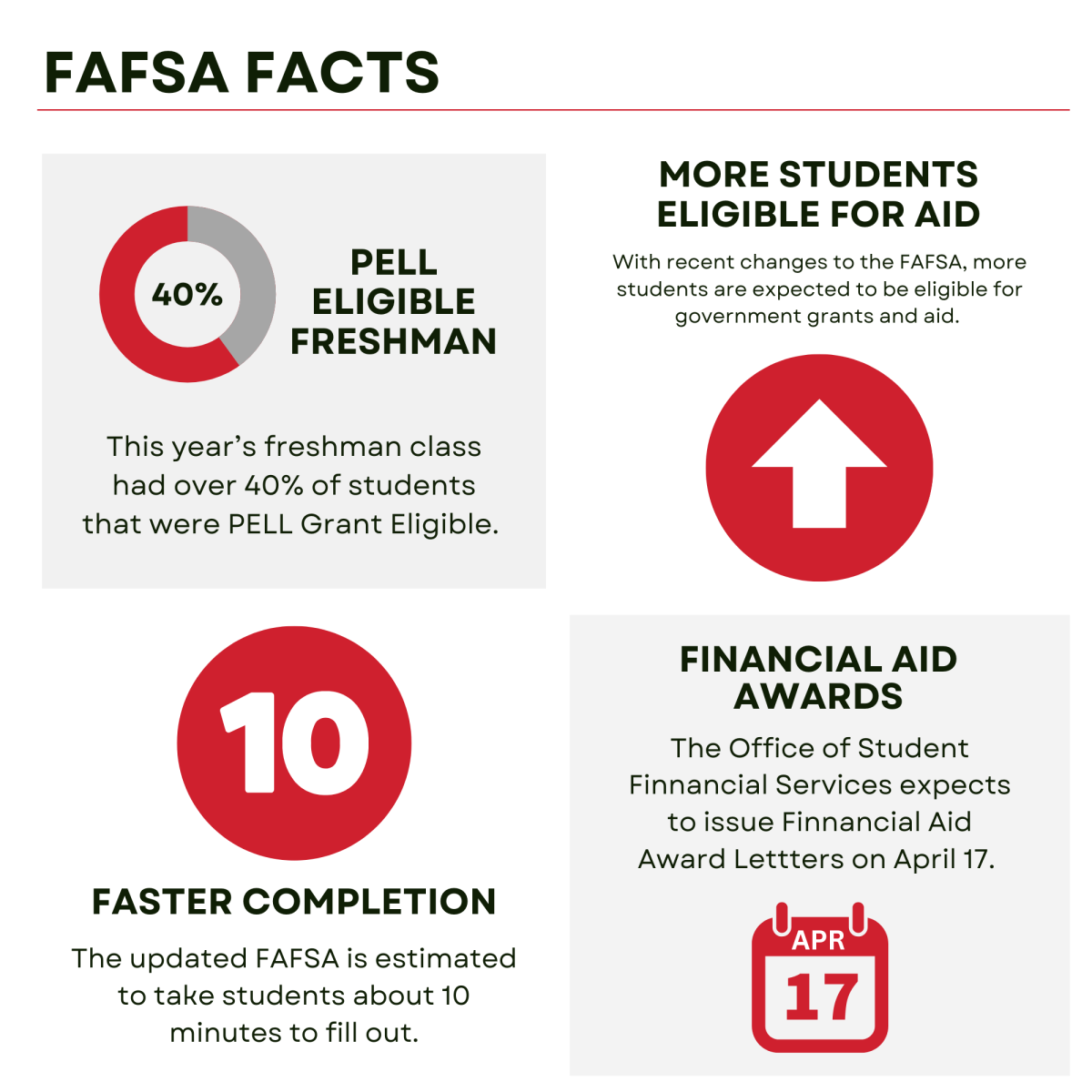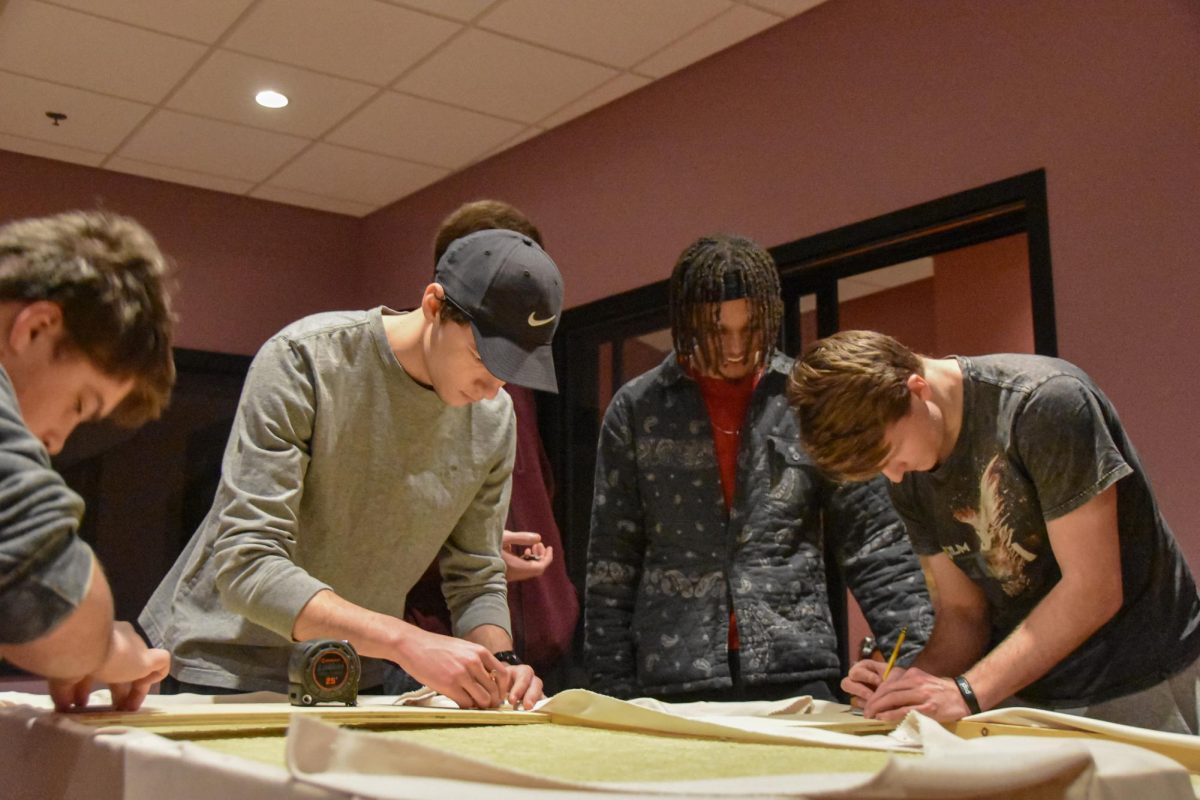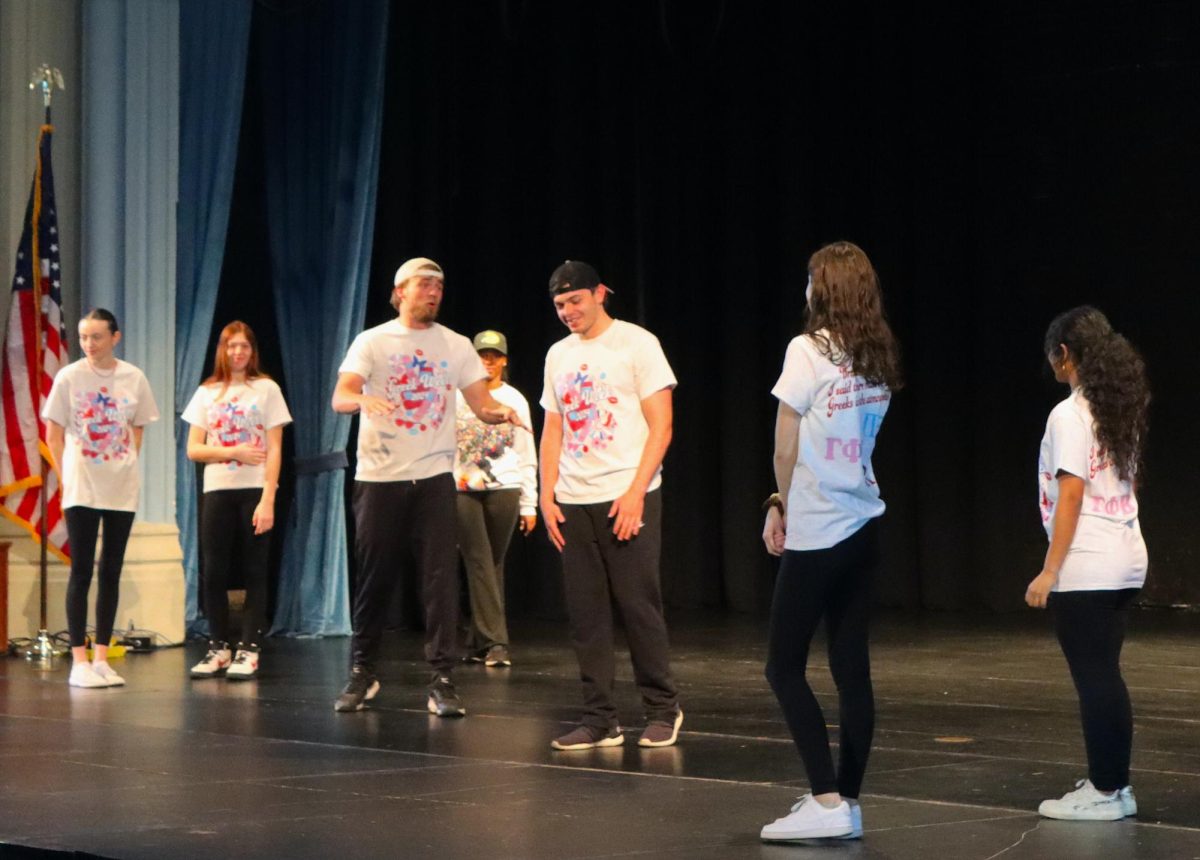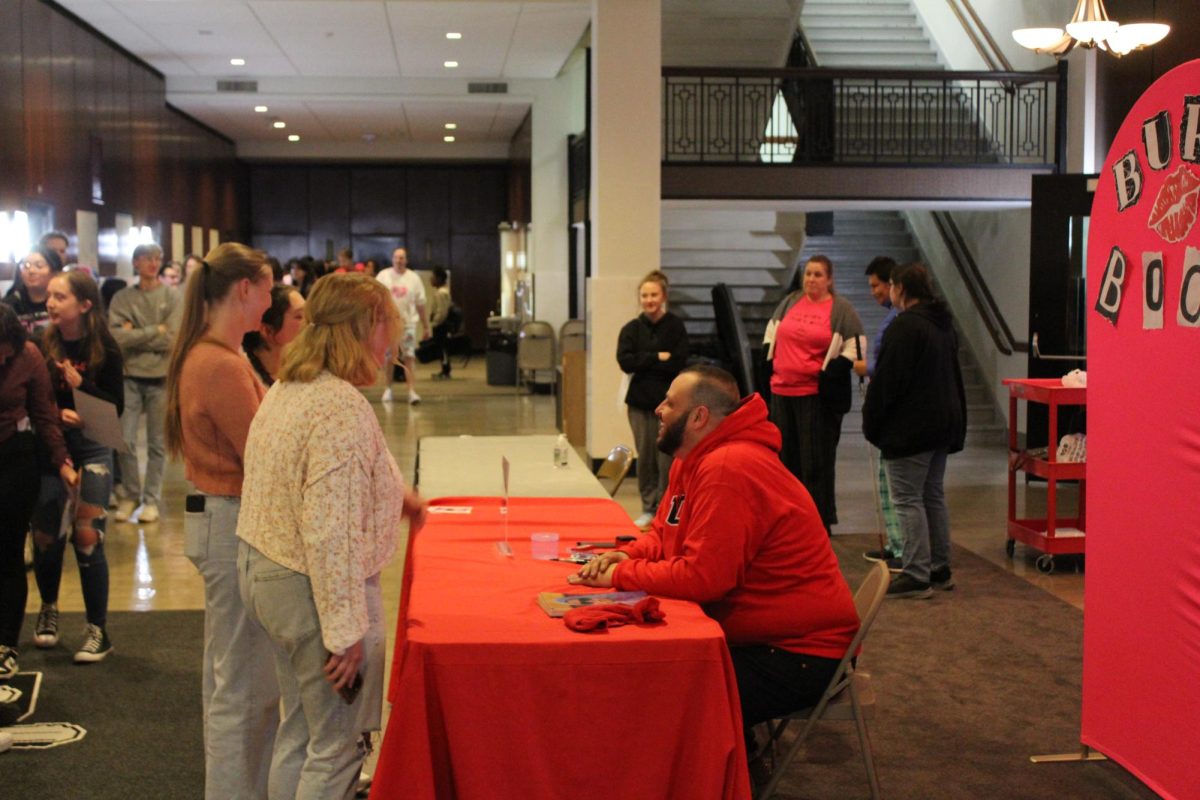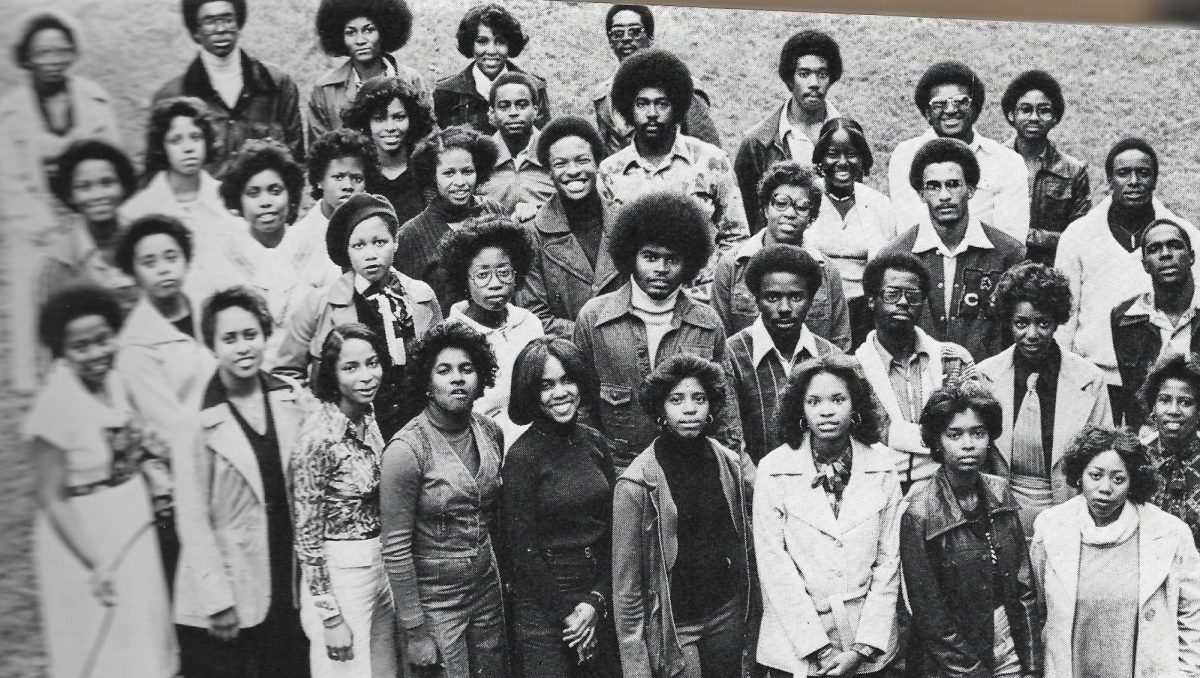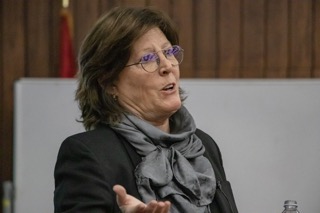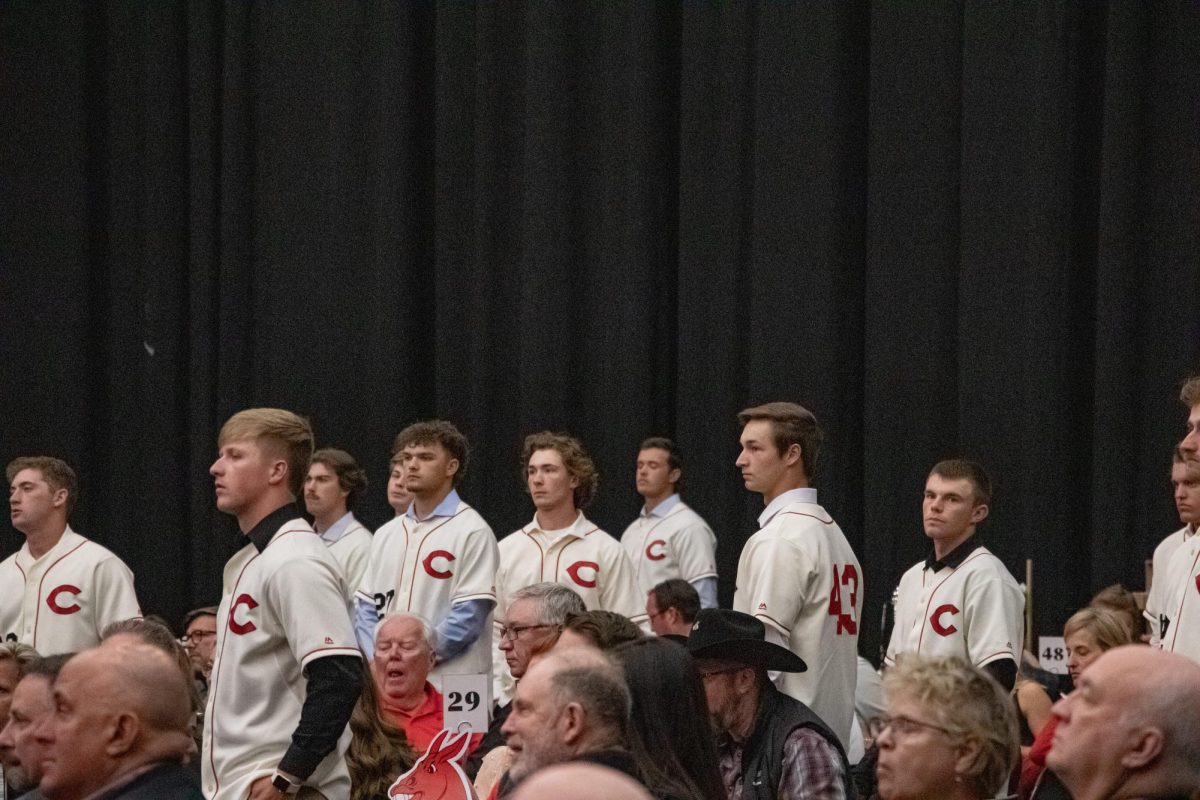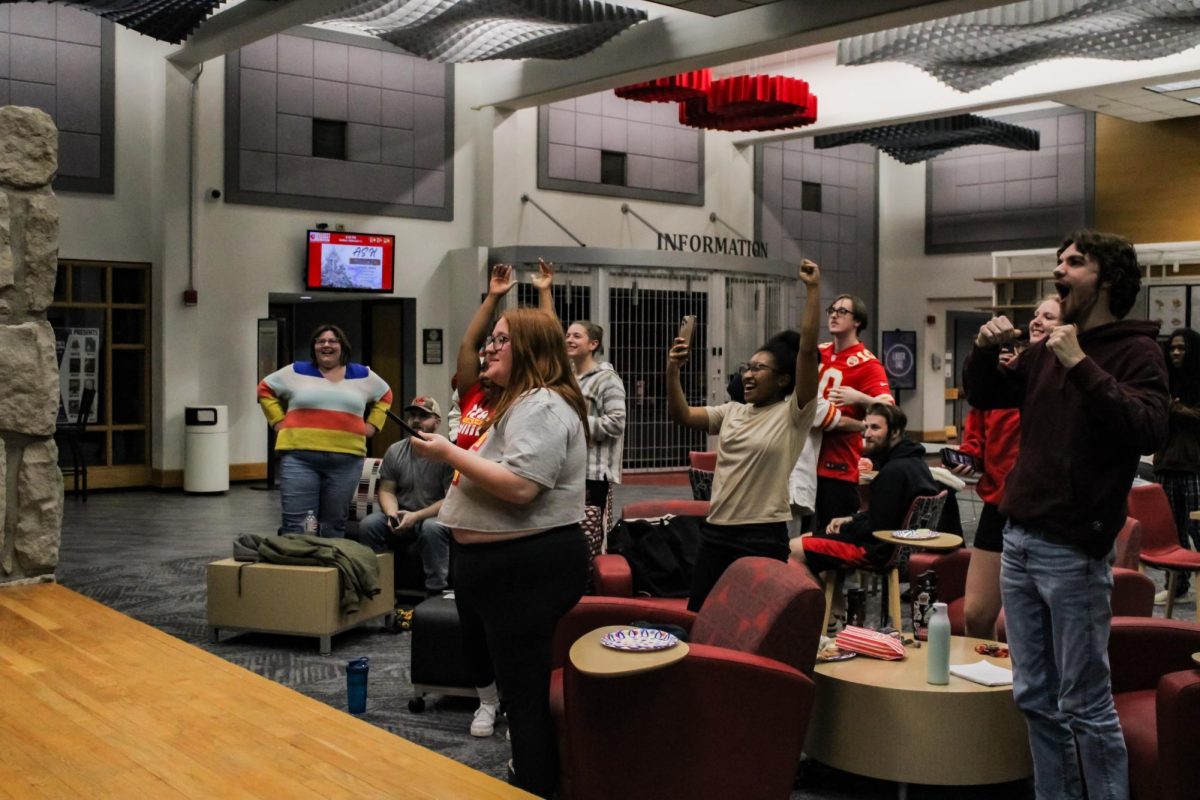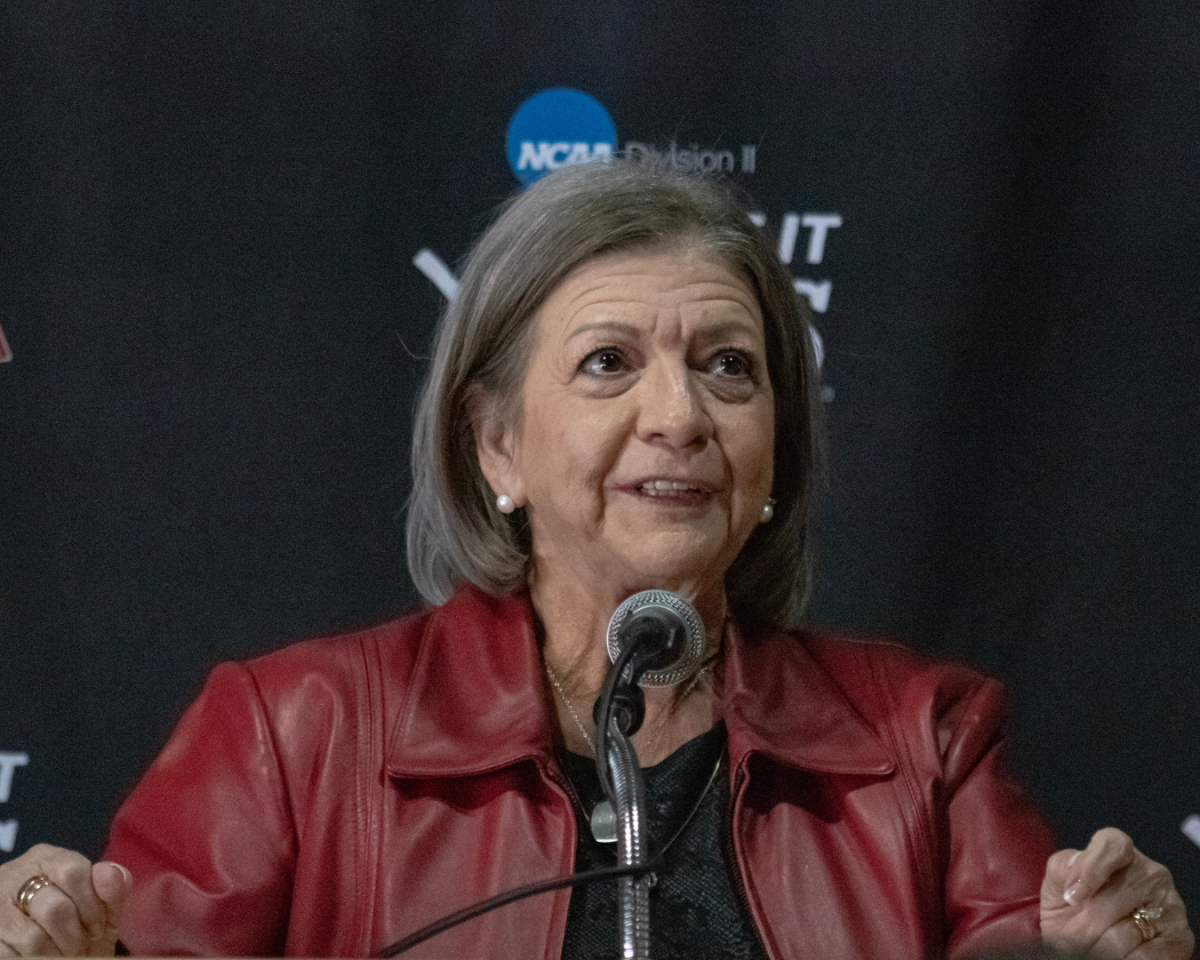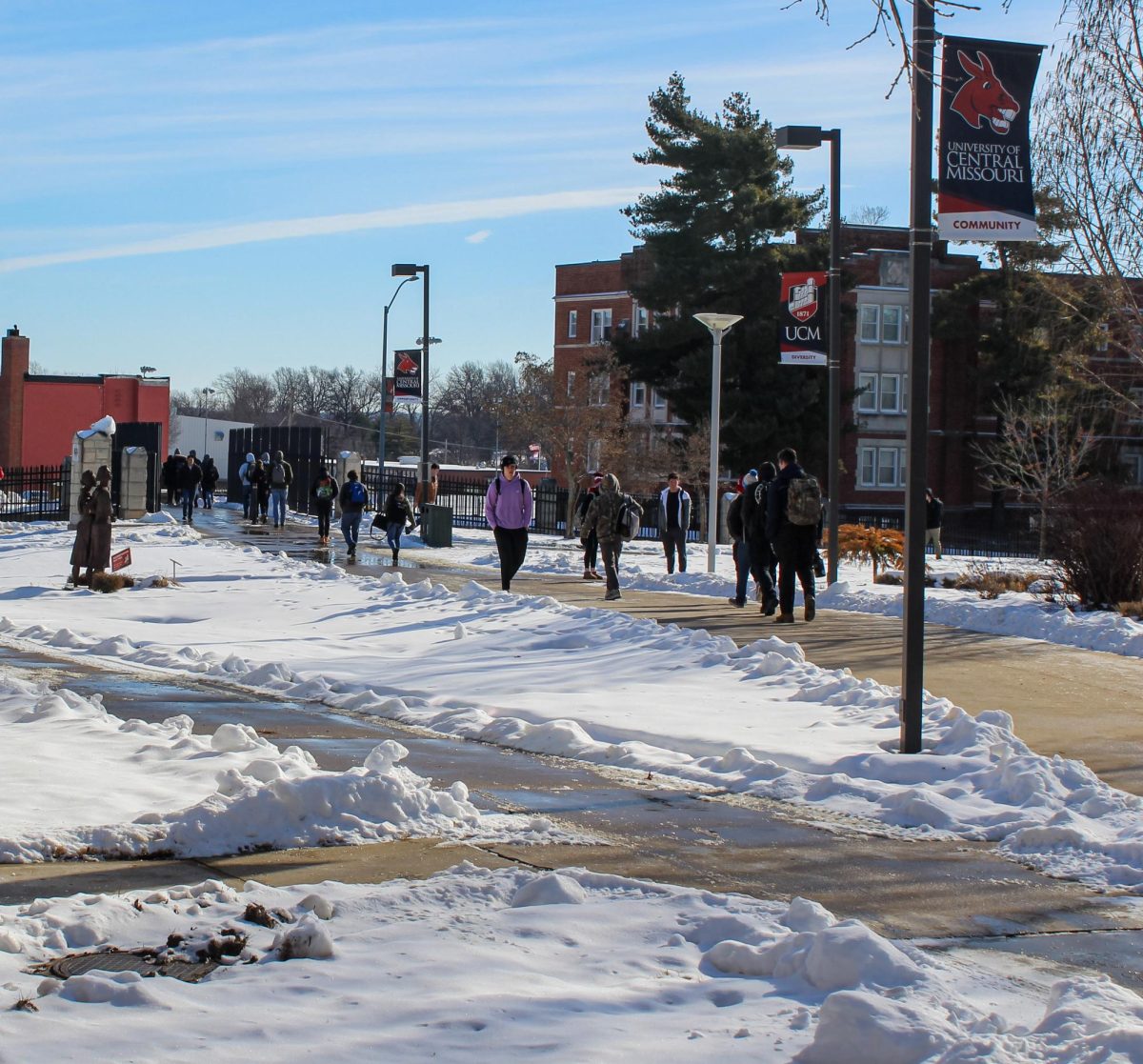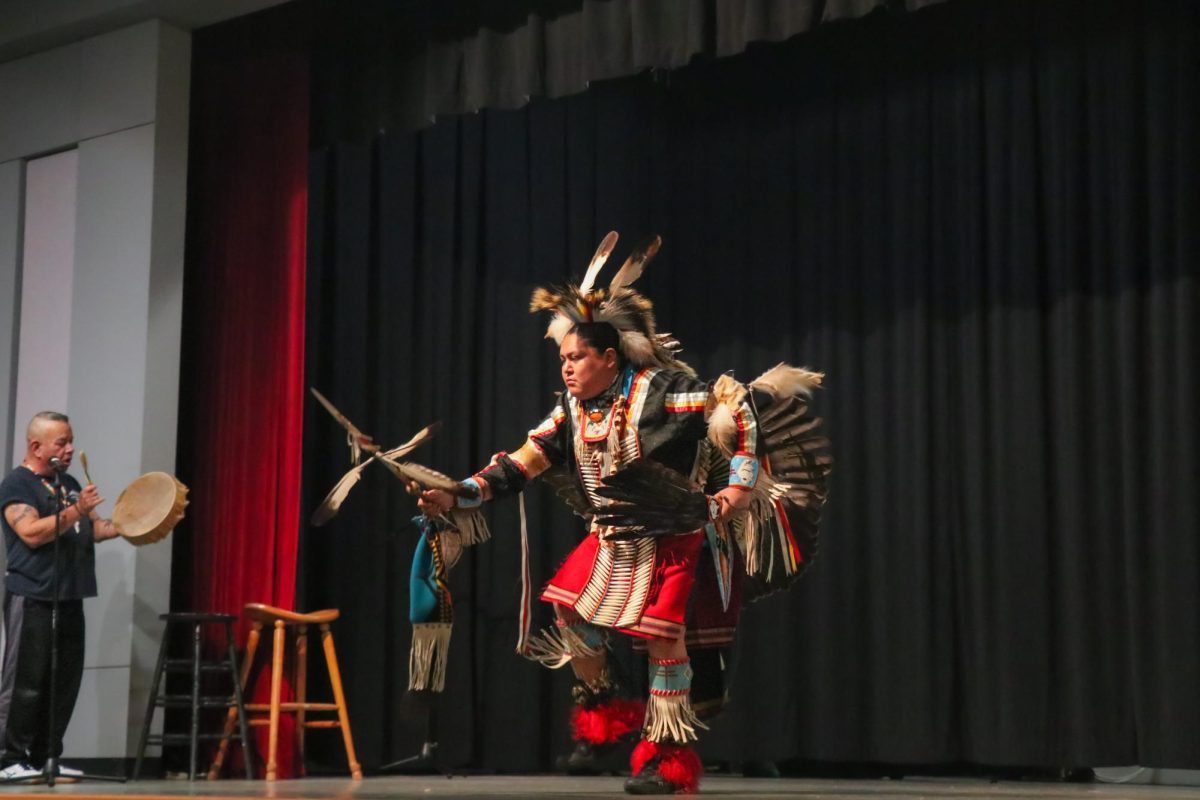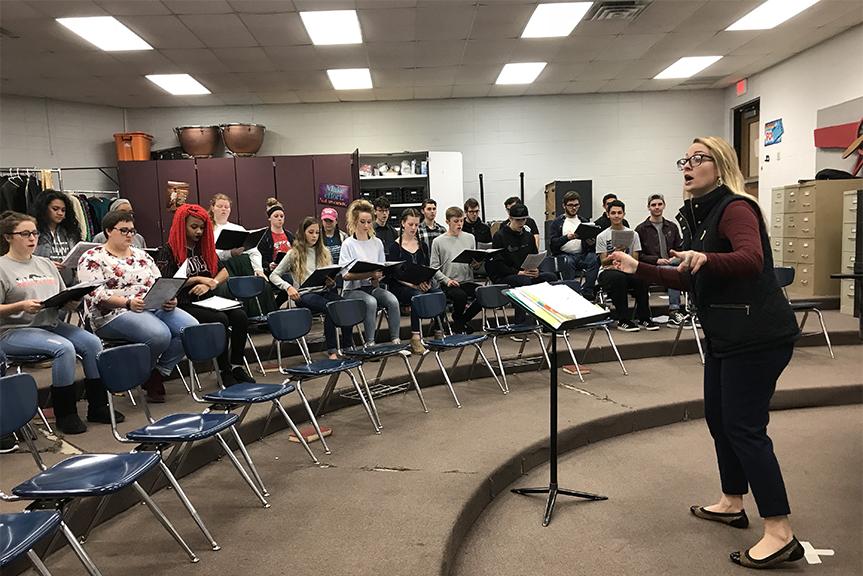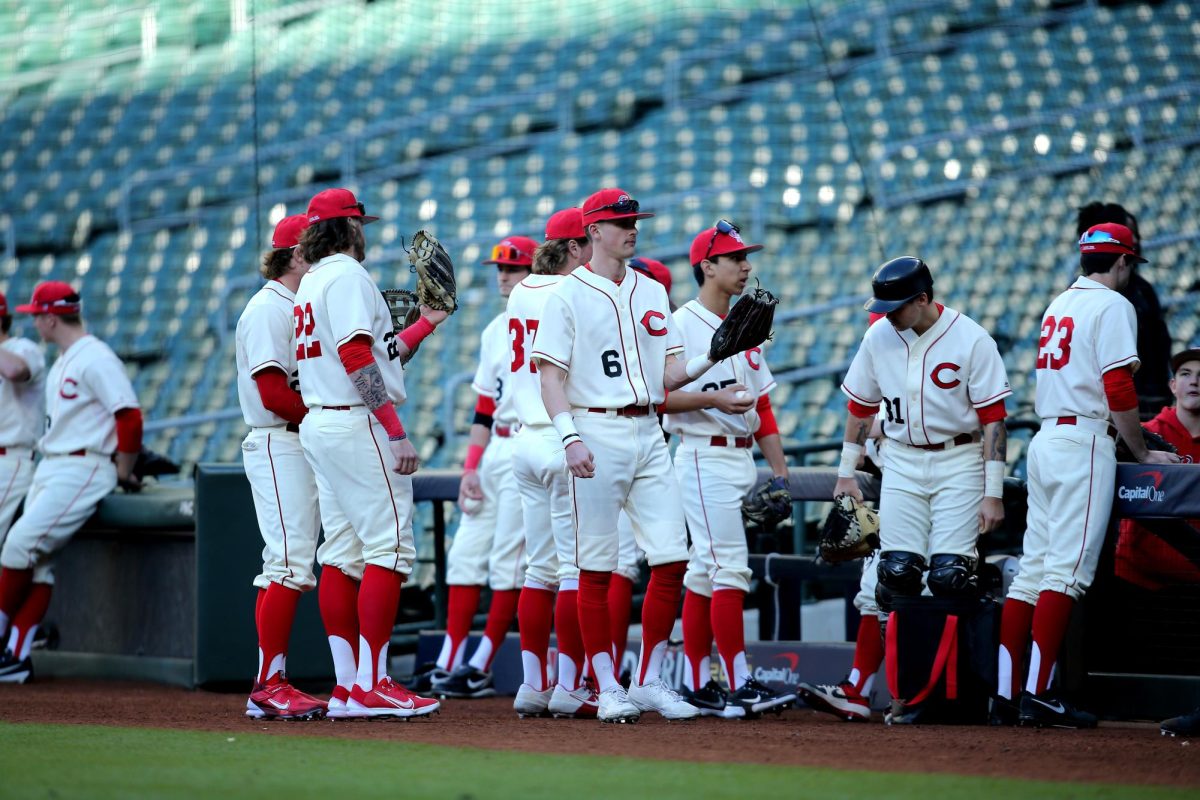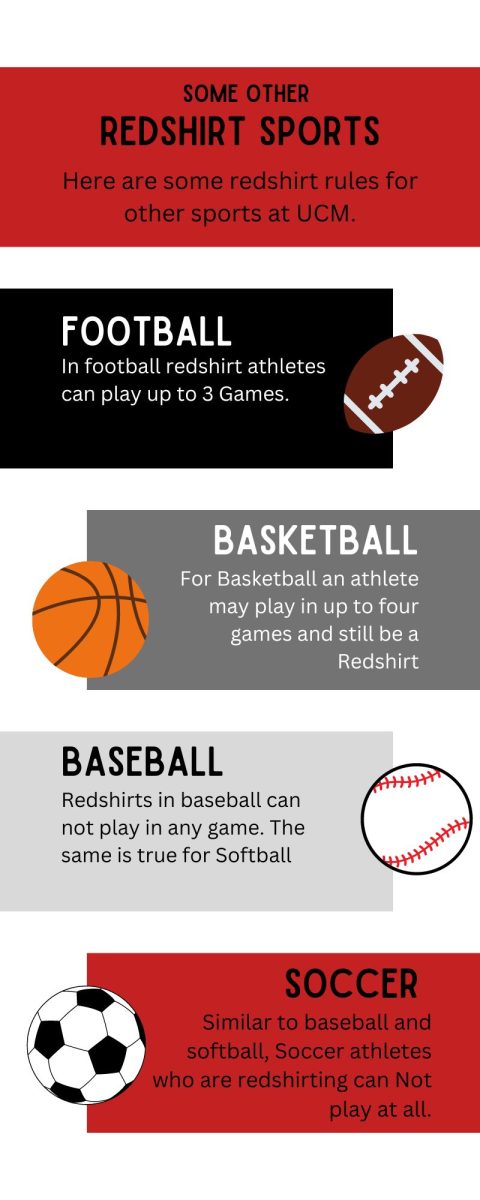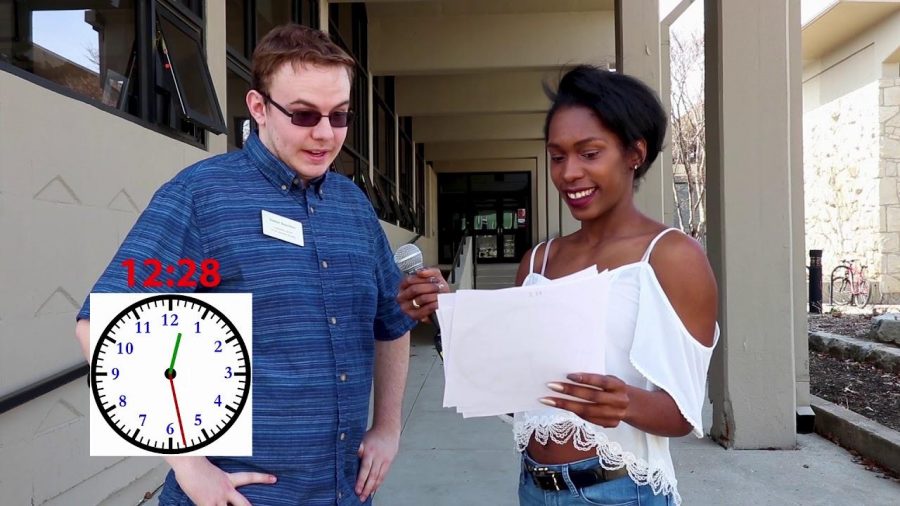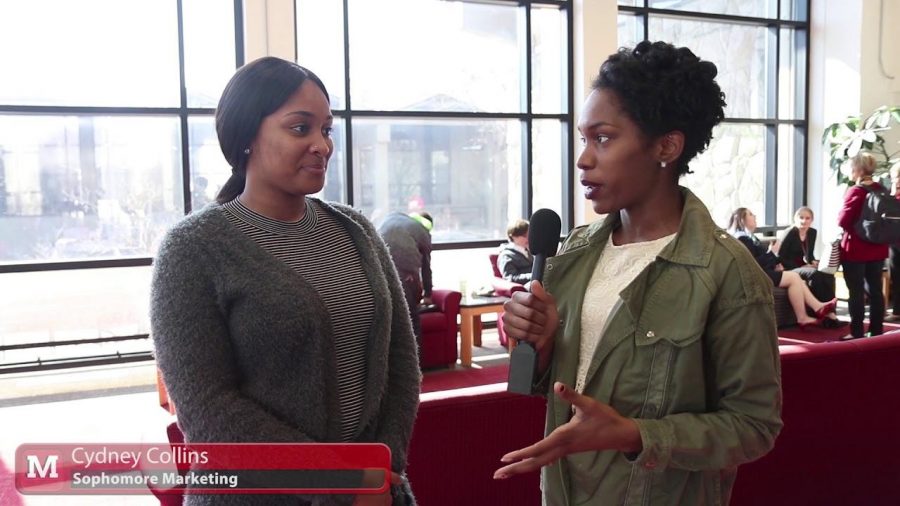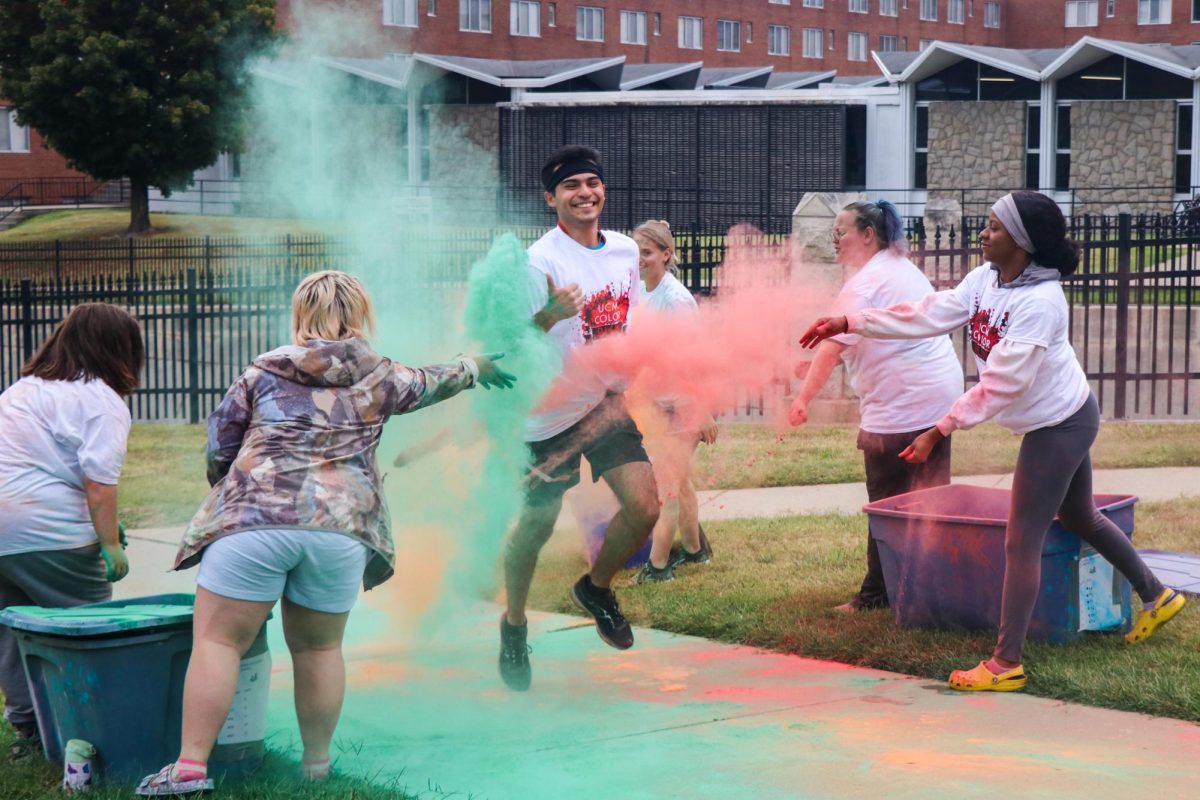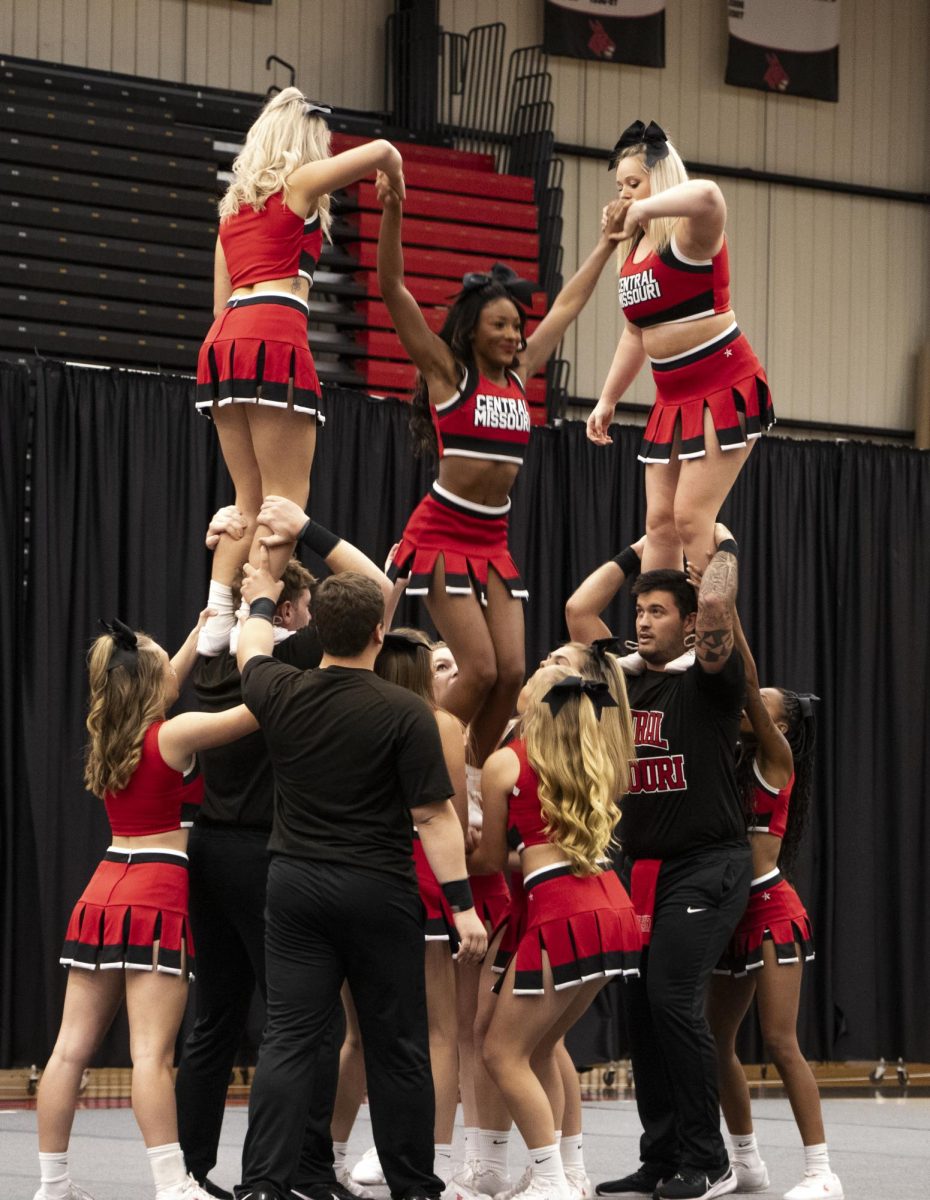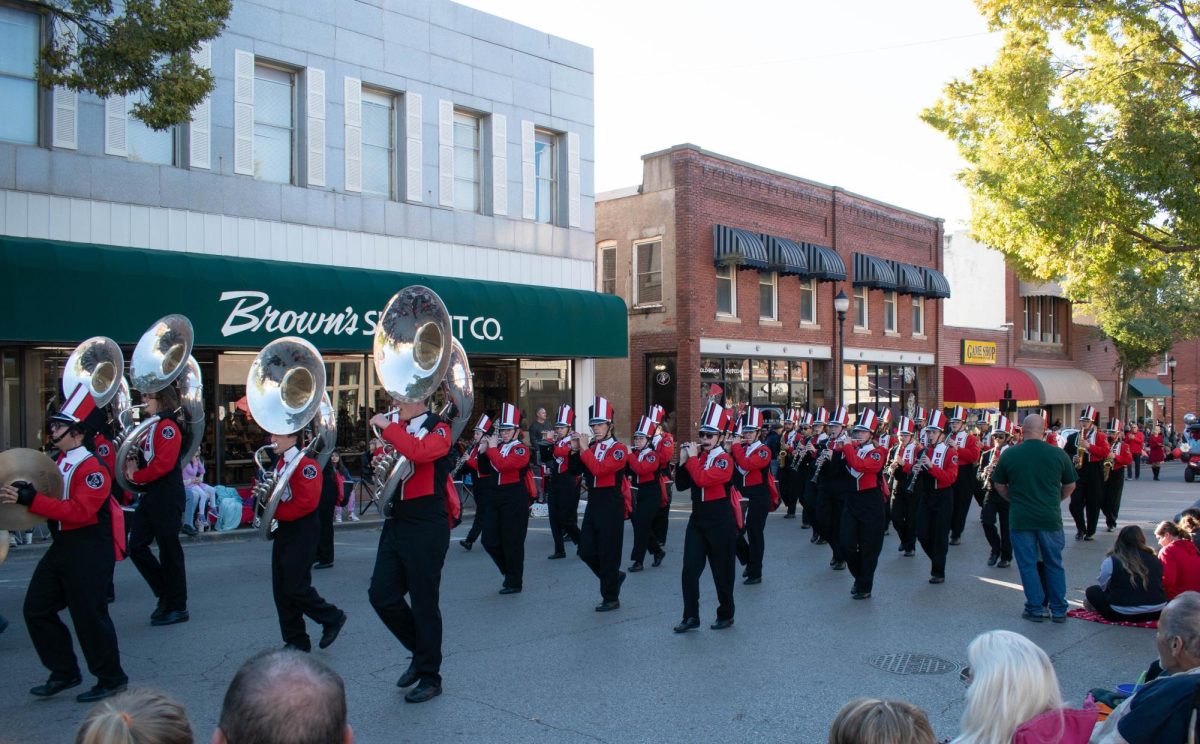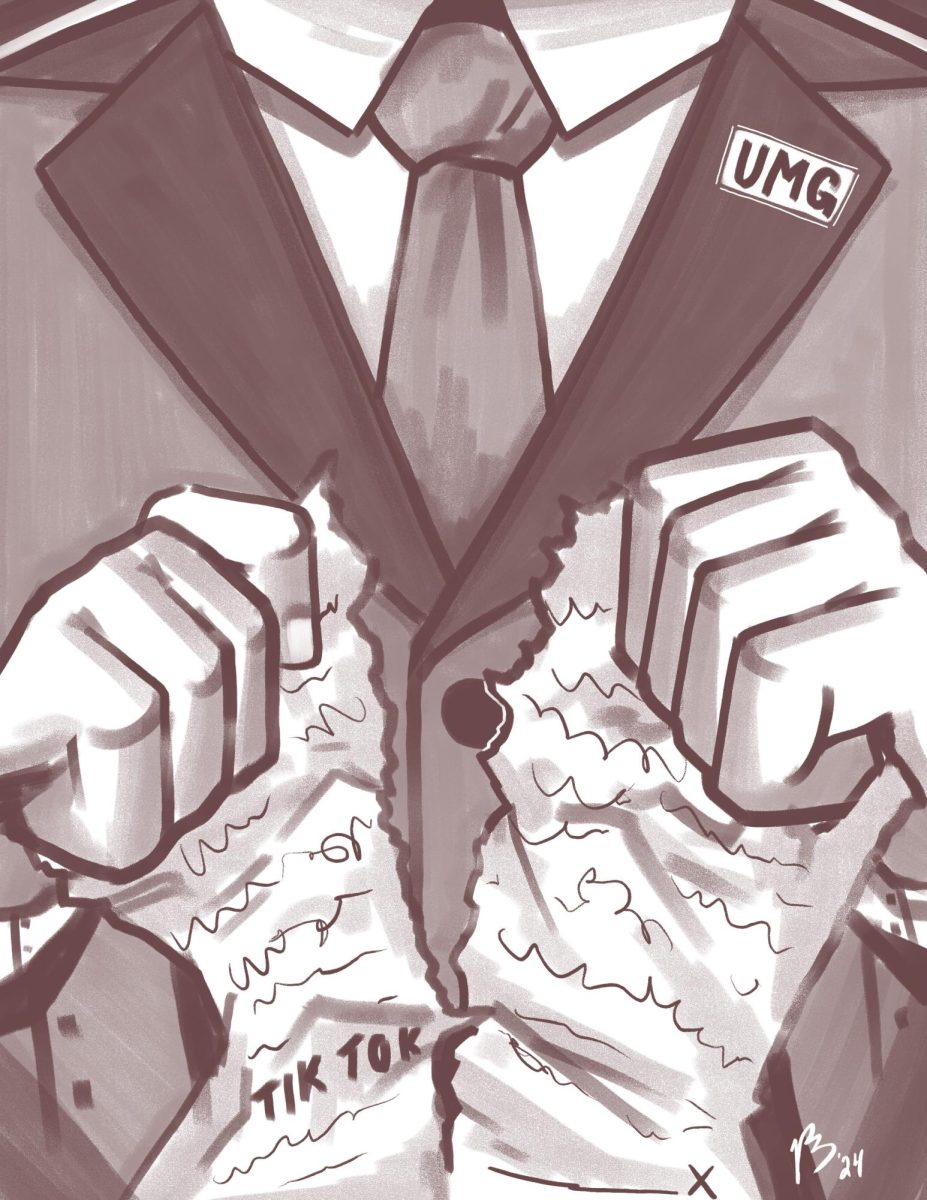The Associated Press
Jefferson City News Tribune, Aug. 9
No offense, but equipment trumps motto
“What will we be offended by today?” has become a popular slogan on social media.
One answer will be a decision by Missouri sheriffs to place the motto, “In God We Trust,” on patrol vehicles.
We are not offended, but we do question whether it is the most prudent expenditure of funds.
The issue is not whether county sheriff’s departments can do it; it is whether they should.
The motto appears on U.S. currency, and the U.S. Supreme Court ruled nearly 60 years ago that it does not conflict with the Constitution’s “establishment clause” that prohibits Congress from establishing a religion and is the basis of church-state separation.
After the Greene County Sheriff’s Department added the slogan to its vehicles, the practice began to spread. At a recent meeting of the Missouri Sheriff’s Association, a unanimous vote adopted the slogan for sheriffs’ agencies statewide.
Cole County Sheriff Greg White explained: “It got national attention when the sheriff’s in southern Missouri did this and the issue was brought up to us here at our conference at the Lake, so we took the vote to support the concept.”
We’re not surprised; who wants to be accused of voting against God?
In addition, we understand and appreciate that the motto will be well-received by many Cole County residents.
But the sheriffs’ action invariably will offend some segments of the population. Criticism will include that the motto is unnecessary; violates the spirit, if not the letter, of the establishment clause; and will alienate some residents at a time when local law enforcement agencies must improve public relations.
Our reservations are more practical.
Sheriff White said funds raised from the annual sheriff’s barbecue will be used to pay to add the motto to the existing fleet of cars. In the past, those funds have been directed to train and outfit volunteer members of the sheriff’s posse and to purchase bullet-proof vests and other protective equipment.
In the final analysis, we believe training, equipping and protecting sheriff’s deputies deserve priority over adding a motto to their vehicles.
____
St. Joseph News-Press, Aug. 8
Face reality of inequalities
The tragic events of Ferguson, Baltimore and elsewhere provide a year’s worth of reasons to reflect anew on inequalities in our society.
On this anniversary of the death of Michael Brown, a black teenager killed by a police officer, much will be made of law enforcement’s use of force against blacks and other racial minorities. This is but one part of a larger group of issues that involves race relations, economic opportunity and personal responsibility.
Most people recognize the best way to avoid serious run-ins with law enforcement is to avoid any suspicion of criminal activity. The fact some people find themselves in these situations, sometimes regularly, doesn’t change the presumption of innocence and the need for respect for all who encounter law enforcement and the judicial system.
The public agrees on this, with nearly two-thirds of Americans telling pollsters recently the country “needs to continue making changes to give blacks equal rights with whites.”
Officers in Missouri already routinely are trained on how to deploy only the force required, how to defuse dangerous situations and how to avoid racial or cultural profiling. While some departments have pushed ahead with more advanced training, Gov. Jay Nixon wants all officers to receive additional training on an annual basis. It’s a good proposal he will implement in partnership with the Peace Officers Standards and Training Commission.
The one statewide change made in the wake of Ferguson was to limit how much revenue cities can take in from traffic fines and other municipal court cases. This change applies to all communities, but has limited impact in places like Northwest Missouri where abuses were not evident.
We respect the restraint shown by legislators in applying sweeping new regulations in other circumstances. The fact is, not all communities have the obvious problems of Ferguson, where distrust of authority was brought on by long-standing questionable practices.
Still, there are lessons here. Missourians in every community today justifiably have a heightened interest in transparency of law enforcement practices, in fairness of our court systems and in the economic problems that beset distressed neighborhoods.
Awareness of these issues is the first step to recognition of the need for changes, and to building a consensus on what the proper response should be.
_____
St. Louis Post-Dispatch, Aug. 9
Moving forward from Ferguson, one year later
Late last month, speaking to a National Urban League audience, Democratic presidential candidate Hillary Clinton ticked off the names that have kept the issue of police brutality against African-Americans in the national consciousness for the past 365 days.
“Together we mourned Tamir Rice and Eric Garner. Walter Scott and Freddie Gray, and most recently Sam DuBose,” the former secretary of state said. “These names are emblazoned on our hearts.”
Yes, for much of America, black or white, that is true.
But Ms. Clinton failed to mention the name that started it all.
One year ago, the 18-year-old African-American teenager lay dead in the middle of Canfield Drive for more than four hours after being shot to death by Ferguson police Officer Darren Wilson, who is white. Mr. Brown was unarmed. Within hours, the protests that would forever change the American narrative about police brutality toward people of color would begin.
So why, just days before the anniversary of his death, would Ms. Clinton not mention his name among the others that have garnered similar headlines during this amazing year of unrest and civil rights revival?
Perhaps it’s because the full circumstances surrounding Mr. Brown’s death were, still are, and likely forever will be, a mystery. For all the details we know, for all the reams of grand jury evidence and testimony revealed, there is no video of him being shot in the back, like Walter Scott. Americans didn’t watch a police officer begin shooting at him before his car even came to a stop, as they did with Tamir Rice. A prosecutor didn’t charge the people responsible for his death with felonies, as happened with those who took Freddie Gray for the ride in a police van that killed him. Darren Wilson wasn’t wearing a body camera like the officer who shot Sam DuBose.
Speaking Michael Brown’s name is a political risk for Ms. Clinton because public opinion is decidedly split on who is to blame for his death. But in the months since Mr. Brown died on the streets of Ferguson, Americans have seen undeniable police brutality up close. We’ve hit rewind and play. We’ve watched in slow motion.
At our worst moments in the past year, we’ve divided into tribal camps: cops vs. protesters, white vs. black. Here in St. Louis, that was especially true when a grand jury decided against indicting Mr. Wilson in November for the death of Mr. Brown. There were moments where the city was like a live performance of a split screen cable TV debate between police union representative Jeff Roorda and protest leader DeRay McKesson.
Get beyond the shouting, though, and there has been undeniable progress in a relatively short amount of time.
According to an analysis by the Associated Press, 24 states have passed 40 measures in the past year changing the dynamic between police and the communities they protect. Many of these proposals have to do with police body cameras. There is now little debate in America that the body cameras are necessary. The questions over their implementation deal with public access and cost, details that, over time, will be worked out based on data. And the data, so far, suggest the body cameras might help bring America’s tribes together.
One study on body camera use in San Diego showed that they both reduced incidents of brutality and complaints against police. That’s a recipe for improving trust between police and communities. It suggests a solution that both protects people of color and the police themselves.
A new poll suggests that even with racial dichotomy, common ground can be found. The Associated Press-NORC Center for Public Affairs poll found that a whopping 65 percent of blacks say they or somebody in their family has been treated unfairly by police. Only 8 percent of whites in the survey reported such treatment. But even with this gulf in real-life experience, 7 in 10 Americans, regardless of color, believe that requiring police to wear body cameras could reduce such incidents of alleged police brutality.
Other polls out this week, from Pew and from the Washington Post, found that a significantly higher number of whites are aware of the need to make policy changes in order to protect equal rights in this country for blacks.
This will be America’s challenge going forward: Building on that common ground. In that regard, body cameras aren’t a panacea but a stepping stone to something bigger.
Here, the St. Louis experience over the past year holds some promise. The Gateway City has become the nation’s petri dish, proving that even amid racial tension, a city on the edge can chart a positive path forward. In the past year, in direct response to the Ferguson protests, city, regional and state leaders came together to target reform in the governance of municipal police departments and courts. Consensus was reached that the system, intentionally or not, was discriminating against poor, black residents by using police as tax collectors and jails as debtors’ prisons to prop up struggling municipal budgets.
St. Louisans of all colors and creeds were offended when they found out that blacks were regularly ticketed and jailed for “manner of walking” in a roadway, that small town police departments enforced ticket quotas, that a corrupt cabal of attorneys, prosecutors and judges were profiting from it all.
Like those protests that built slowly and powerfully beginning on Aug. 9, the cries for justice got louder and louder — in the Ferguson Commission, the group formed by Gov. Jay Nixon to study the underlying causes of unrest in north St. Louis County; in the Missouri Legislature and in the stately Missouri Supreme Court building.
One year after Mr. Brown died, there is widespread consensus that 90 municipalities, 81 municipal courts and 57 police departments in one county of about a million people are too many. The Legislature has passed a new law that will start the dominoes falling by limiting the revenue municipal courts can collect, and a Supreme Court committee is considering changes that should go a long way to protect basic civil rights of poor people who find themselves before a municipal judge.
The broken court and police systems didn’t kill Michael Brown, but they helped oppress the people who live where he lived, who walked and drove North County streets, who couldn’t make ends meet because municipal governments kept wanting a piece of the pie.
How far has our region come in a year?
One of the strongest recent voices pushing for consolidation of small, under-trained police departments that prey on the poor by writing traffic tickets is St. Louis County police Chief Jon Belmar. This is the same man who during the protests often found himself at odds with protesters over police tactics.
That’s progress.
Still, tangible movement on matters of public policy can’t undo decades of neglect. There is still concentrated poverty in and around the Canfield Green Apartments. The Normandy schools that graduated Michael Brown are still unaccredited. The divide in St. Louis between black and white is still among the widest in the country.
That’s why one year later, the lesson of Ferguson must be one word: forward. That is the only direction we can go. As a region we must comb through the 200 recommendations of the Ferguson Commission and build on those ideas that resonate in disparate crowds, such as increasing police training and improving social mobility opportunities among the poor and middle classes.
As a nation, we must embrace the spectrum of change as seen through the lives and deaths of Michael Brown, Tamir Rice, Eric Garner, Walter Scott, Freddie Gray, Sam DuBose, and, most recently, Sandra Bland.
As a people, we are called to build on whatever small slice of common ground we identified in the past year where we can stand with those who might otherwise seem so different from us.
_____
The Southeast Missourian, Aug. 3
Guardsmen should be armed for safety
The growing number of deadly shootings in the nation guarantees no end is in sight for conversations about gun control and gun-free zones.
In the wake of July’s Chattanooga shooting in which four Marines and a sailor were killed, Missouri’s Republican Caucus says it’s time to arm Missouri National Guardsmen, and state Sen. Wayne Wallingford agrees.
The request for Gov. Jay Nixon to sign an executive order to arm the Guard is a wise one. Our service members are among the best trained in firearms, and they risk their lives fighting to keep America and her allies safe.
What a tragedy it is when they are rendered helpless on their own soil because we refuse to allow them to defend themselves.
As quoted in the Southeast Missourian, Wallingford asserted that “you can’t find a more highly qualified professional than our United States military, the reserves and the National Guardsmen, and they’re trained in the handling of weapons continually.”
That training must be better harnessed. Americans have been told repeatedly that terrorists — whether those functioning as part of an organization or operating as “lone wolves” — have become inspired to attack United States military members. And they’re no fools; they’re aware that we have placed servicemen and women in gun-free zones, stripping them of the means to protect themselves and others.
In the midst of violence, which we are seeing at an alarming rate, many are saying, “The only thing that stops a bad guy with a gun is a good guy with a gun.” Well, there is no better representative of a good guy than the guy — or gal — wearing a U.S. military uniform.
We humbly call on Gov. Jay Nixon to follow the example of governors in various other states who have determined not to allow the best among us to be soft targets. We call upon him to sign that executive order to arm our National Guard.
“What will we be offended by today?” has become a popular slogan on social media.
One answer will be a decision by Missouri sheriffs to place the motto, “In God We Trust,” on patrol vehicles.
We are not offended, but we do question whether it is the most prudent expenditure of funds.
The issue is not whether county sheriff’s departments can do it; it is whether they should.
The motto appears on U.S. currency, and the U.S. Supreme Court ruled nearly 60 years ago that it does not conflict with the Constitution’s “establishment clause” that prohibits Congress from establishing a religion and is the basis of church-state separation.
After the Greene County Sheriff’s Department added the slogan to its vehicles, the practice began to spread. At a recent meeting of the Missouri Sheriff’s Association, a unanimous vote adopted the slogan for sheriffs’ agencies statewide.
Cole County Sheriff Greg White explained: “It got national attention when the sheriff’s in southern Missouri did this and the issue was brought up to us here at our conference at the Lake, so we took the vote to support the concept.”
We’re not surprised; who wants to be accused of voting against God?
In addition, we understand and appreciate that the motto will be well-received by many Cole County residents.
But the sheriffs’ action invariably will offend some segments of the population. Criticism will include that the motto is unnecessary; violates the spirit, if not the letter, of the establishment clause; and will alienate some residents at a time when local law enforcement agencies must improve public relations.
Our reservations are more practical.
Sheriff White said funds raised from the annual sheriff’s barbecue will be used to pay to add the motto to the existing fleet of cars. In the past, those funds have been directed to train and outfit volunteer members of the sheriff’s posse and to purchase bullet-proof vests and other protective equipment.
In the final analysis, we believe training, equipping and protecting sheriff’s deputies deserve priority over adding a motto to their vehicles.
____
St. Joseph News-Press, Aug. 8
Face reality of inequalities
The tragic events of Ferguson, Baltimore and elsewhere provide a year’s worth of reasons to reflect anew on inequalities in our society.
On this anniversary of the death of Michael Brown, a black teenager killed by a police officer, much will be made of law enforcement’s use of force against blacks and other racial minorities. This is but one part of a larger group of issues that involves race relations, economic opportunity and personal responsibility.
Most people recognize the best way to avoid serious run-ins with law enforcement is to avoid any suspicion of criminal activity. The fact some people find themselves in these situations, sometimes regularly, doesn’t change the presumption of innocence and the need for respect for all who encounter law enforcement and the judicial system.
The public agrees on this, with nearly two-thirds of Americans telling pollsters recently the country “needs to continue making changes to give blacks equal rights with whites.”
Officers in Missouri already routinely are trained on how to deploy only the force required, how to defuse dangerous situations and how to avoid racial or cultural profiling. While some departments have pushed ahead with more advanced training, Gov. Jay Nixon wants all officers to receive additional training on an annual basis. It’s a good proposal he will implement in partnership with the Peace Officers Standards and Training Commission.
The one statewide change made in the wake of Ferguson was to limit how much revenue cities can take in from traffic fines and other municipal court cases. This change applies to all communities, but has limited impact in places like Northwest Missouri where abuses were not evident.
We respect the restraint shown by legislators in applying sweeping new regulations in other circumstances. The fact is, not all communities have the obvious problems of Ferguson, where distrust of authority was brought on by long-standing questionable practices.
Still, there are lessons here. Missourians in every community today justifiably have a heightened interest in transparency of law enforcement practices, in fairness of our court systems and in the economic problems that beset distressed neighborhoods.
Awareness of these issues is the first step to recognition of the need for changes, and to building a consensus on what the proper response should be.
_____
St. Louis Post-Dispatch, Aug. 9
Moving forward from Ferguson, one year later
Late last month, speaking to a National Urban League audience, Democratic presidential candidate Hillary Clinton ticked off the names that have kept the issue of police brutality against African-Americans in the national consciousness for the past 365 days.
“Together we mourned Tamir Rice and Eric Garner. Walter Scott and Freddie Gray, and most recently Sam DuBose,” the former secretary of state said. “These names are emblazoned on our hearts.”
Yes, for much of America, black or white, that is true.
But Ms. Clinton failed to mention the name that started it all.
One year ago, the 18-year-old African-American teenager lay dead in the middle of Canfield Drive for more than four hours after being shot to death by Ferguson police Officer Darren Wilson, who is white. Mr. Brown was unarmed. Within hours, the protests that would forever change the American narrative about police brutality toward people of color would begin.
So why, just days before the anniversary of his death, would Ms. Clinton not mention his name among the others that have garnered similar headlines during this amazing year of unrest and civil rights revival?
Perhaps it’s because the full circumstances surrounding Mr. Brown’s death were, still are, and likely forever will be, a mystery. For all the details we know, for all the reams of grand jury evidence and testimony revealed, there is no video of him being shot in the back, like Walter Scott. Americans didn’t watch a police officer begin shooting at him before his car even came to a stop, as they did with Tamir Rice. A prosecutor didn’t charge the people responsible for his death with felonies, as happened with those who took Freddie Gray for the ride in a police van that killed him. Darren Wilson wasn’t wearing a body camera like the officer who shot Sam DuBose.
Speaking Michael Brown’s name is a political risk for Ms. Clinton because public opinion is decidedly split on who is to blame for his death. But in the months since Mr. Brown died on the streets of Ferguson, Americans have seen undeniable police brutality up close. We’ve hit rewind and play. We’ve watched in slow motion.
At our worst moments in the past year, we’ve divided into tribal camps: cops vs. protesters, white vs. black. Here in St. Louis, that was especially true when a grand jury decided against indicting Mr. Wilson in November for the death of Mr. Brown. There were moments where the city was like a live performance of a split screen cable TV debate between police union representative Jeff Roorda and protest leader DeRay McKesson.
Get beyond the shouting, though, and there has been undeniable progress in a relatively short amount of time.
According to an analysis by the Associated Press, 24 states have passed 40 measures in the past year changing the dynamic between police and the communities they protect. Many of these proposals have to do with police body cameras. There is now little debate in America that the body cameras are necessary. The questions over their implementation deal with public access and cost, details that, over time, will be worked out based on data. And the data, so far, suggest the body cameras might help bring America’s tribes together.
One study on body camera use in San Diego showed that they both reduced incidents of brutality and complaints against police. That’s a recipe for improving trust between police and communities. It suggests a solution that both protects people of color and the police themselves.
A new poll suggests that even with racial dichotomy, common ground can be found. The Associated Press-NORC Center for Public Affairs poll found that a whopping 65 percent of blacks say they or somebody in their family has been treated unfairly by police. Only 8 percent of whites in the survey reported such treatment. But even with this gulf in real-life experience, 7 in 10 Americans, regardless of color, believe that requiring police to wear body cameras could reduce such incidents of alleged police brutality.
Other polls out this week, from Pew and from the Washington Post, found that a significantly higher number of whites are aware of the need to make policy changes in order to protect equal rights in this country for blacks.
This will be America’s challenge going forward: Building on that common ground. In that regard, body cameras aren’t a panacea but a stepping stone to something bigger.
Here, the St. Louis experience over the past year holds some promise. The Gateway City has become the nation’s petri dish, proving that even amid racial tension, a city on the edge can chart a positive path forward. In the past year, in direct response to the Ferguson protests, city, regional and state leaders came together to target reform in the governance of municipal police departments and courts. Consensus was reached that the system, intentionally or not, was discriminating against poor, black residents by using police as tax collectors and jails as debtors’ prisons to prop up struggling municipal budgets.
St. Louisans of all colors and creeds were offended when they found out that blacks were regularly ticketed and jailed for “manner of walking” in a roadway, that small town police departments enforced ticket quotas, that a corrupt cabal of attorneys, prosecutors and judges were profiting from it all.
Like those protests that built slowly and powerfully beginning on Aug. 9, the cries for justice got louder and louder — in the Ferguson Commission, the group formed by Gov. Jay Nixon to study the underlying causes of unrest in north St. Louis County; in the Missouri Legislature and in the stately Missouri Supreme Court building.
One year after Mr. Brown died, there is widespread consensus that 90 municipalities, 81 municipal courts and 57 police departments in one county of about a million people are too many. The Legislature has passed a new law that will start the dominoes falling by limiting the revenue municipal courts can collect, and a Supreme Court committee is considering changes that should go a long way to protect basic civil rights of poor people who find themselves before a municipal judge.
The broken court and police systems didn’t kill Michael Brown, but they helped oppress the people who live where he lived, who walked and drove North County streets, who couldn’t make ends meet because municipal governments kept wanting a piece of the pie.
How far has our region come in a year?
One of the strongest recent voices pushing for consolidation of small, under-trained police departments that prey on the poor by writing traffic tickets is St. Louis County police Chief Jon Belmar. This is the same man who during the protests often found himself at odds with protesters over police tactics.
That’s progress.
Still, tangible movement on matters of public policy can’t undo decades of neglect. There is still concentrated poverty in and around the Canfield Green Apartments. The Normandy schools that graduated Michael Brown are still unaccredited. The divide in St. Louis between black and white is still among the widest in the country.
That’s why one year later, the lesson of Ferguson must be one word: forward. That is the only direction we can go. As a region we must comb through the 200 recommendations of the Ferguson Commission and build on those ideas that resonate in disparate crowds, such as increasing police training and improving social mobility opportunities among the poor and middle classes.
As a nation, we must embrace the spectrum of change as seen through the lives and deaths of Michael Brown, Tamir Rice, Eric Garner, Walter Scott, Freddie Gray, Sam DuBose, and, most recently, Sandra Bland.
As a people, we are called to build on whatever small slice of common ground we identified in the past year where we can stand with those who might otherwise seem so different from us.
_____
The Southeast Missourian, Aug. 3
Guardsmen should be armed for safety
The growing number of deadly shootings in the nation guarantees no end is in sight for conversations about gun control and gun-free zones.
In the wake of July’s Chattanooga shooting in which four Marines and a sailor were killed, Missouri’s Republican Caucus says it’s time to arm Missouri National Guardsmen, and state Sen. Wayne Wallingford agrees.
The request for Gov. Jay Nixon to sign an executive order to arm the Guard is a wise one. Our service members are among the best trained in firearms, and they risk their lives fighting to keep America and her allies safe.
What a tragedy it is when they are rendered helpless on their own soil because we refuse to allow them to defend themselves.
As quoted in the Southeast Missourian, Wallingford asserted that “you can’t find a more highly qualified professional than our United States military, the reserves and the National Guardsmen, and they’re trained in the handling of weapons continually.”
That training must be better harnessed. Americans have been told repeatedly that terrorists — whether those functioning as part of an organization or operating as “lone wolves” — have become inspired to attack United States military members. And they’re no fools; they’re aware that we have placed servicemen and women in gun-free zones, stripping them of the means to protect themselves and others.
In the midst of violence, which we are seeing at an alarming rate, many are saying, “The only thing that stops a bad guy with a gun is a good guy with a gun.” Well, there is no better representative of a good guy than the guy — or gal — wearing a U.S. military uniform.
We humbly call on Gov. Jay Nixon to follow the example of governors in various other states who have determined not to allow the best among us to be soft targets. We call upon him to sign that executive order to arm our National Guard.
Story continues below advertisement

